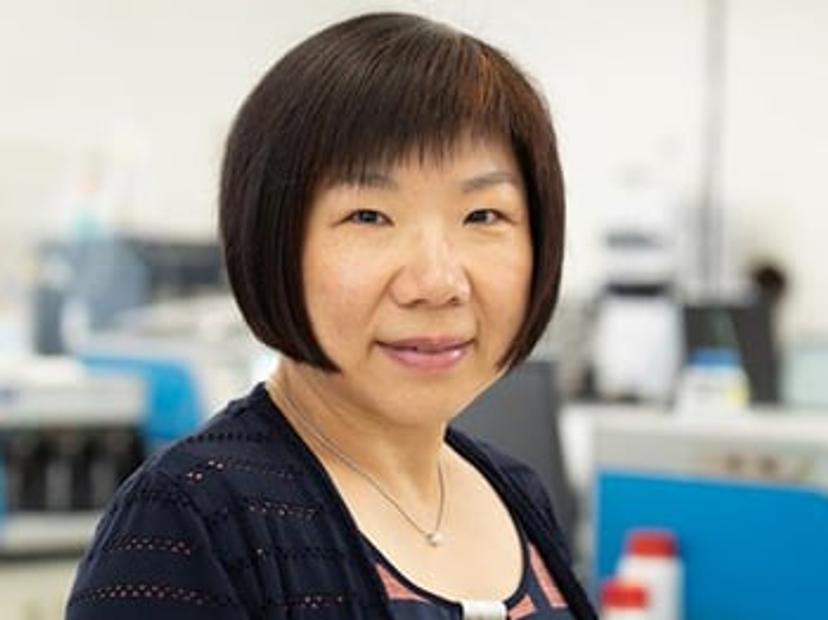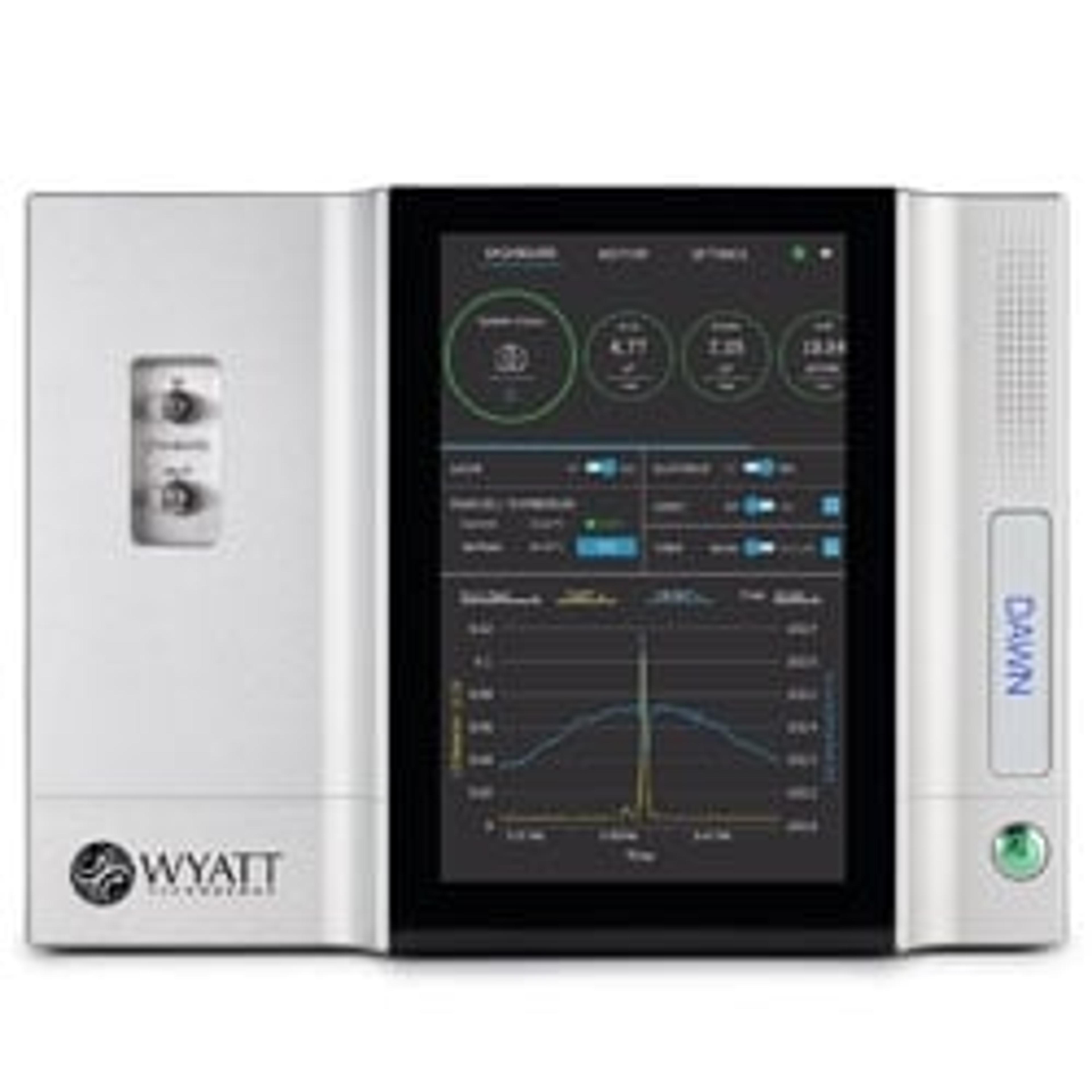Characterizing lipid nanoparticles for drug delivery: Latest advancements and expert opinion
A panel of experts share their insights into the development of lipid nanoparticles for drug delivery and reveal the analytical solutions designed to help labs advance further in this field.
16 Dec 2022
The field of medicine evolves continually as new scientific discoveries help to further advancements in the field. The use of lipid nanoparticles for delivery of nucleic acids is an example of one of these new and exciting developments.

Lipid nanoparticle (LNP)-based therapeutics employ a unique formulation technology wherein nanoparticles composed of lipids transport a range of pharmaceuticals throughout the body. As a recent high-profile example, LNPs play a crucial role in transporting mRNA to target cells, and this technology underpins the tremendous success of the recent COVID-19 vaccine approach. In this exclusive SelectScience® interview, we speak with a panel of scientific experts - Michelle Chen, Vice President of Analytical Sciences at Wyatt Technology; Jérémie Parot, Research Scientist at SINTEF; and James Z Deng, Senior Scientist and Analytical Lead at Merck & Co, to find out more about the use of lipid nanoparticles for drug delivery, and the powerful analytical technologies that are needed to facilitate and further advance the field of lipid nanoparticle therapeutics.
The lipid nanoparticle revolution

Lipid nanoparticle therapeutics deliver DNA, mRNA, siRNA, and other gene-modulating complexes throughout the body to treat disease – it is a technology proven to have remarkable therapeutic potential. Nevertheless, powerful analytical tools are needed to further develop these promising modalities. To understand this in more detail, we spoke with Michelle Chen at Wyatt Technology. “I have been with Wyatt for the past two and half decades, working with customers to develop and support various applications using DAWN multi-angle light scattering (MALS) and dynamic light scattering (DLS) instruments, in combination with size-exclusion chromatography (SEC) and field-flow fractionation (FFF) implemented with our Eclipse FFF system,” explains Chen.
MALS measures the intensities of light at different angles scattered by a sample upon illumination by a laser beam, and determines the absolute molar mass and size of molecules in a solution. DLS, also a non-invasive technique, on the other hand, determines the size distribution profile of particles and molecules, typically in the submicron region. “LNP samples are complex as they are heterogeneous in size, MW, and payload. Dynamic light scattering has been widely adopted to monitor particle size, polydispersity, and particle concentration of LNP formulations. Though a batch DLS measurement is easy and quick, it is often not adequate to support process development and optimization, as the results lack data consistency and resolution for characterizing heterogeneous samples like LNPs. SEC or FFF combined with MALS and other downstream detectors significantly improve the ability to differentiate batch-to-batch variations, understand the impact of different process parameters, and monitor changes in stressed samples. In addition, the signals from the online detectors (MALS, UV, and dRI) following SEC/FFF can quantify more LNP quality attributes, including encapsulation efficiency and the distribution of payload according to particle size,” explains Dr. Chen.

Lipid nanoparticles for drug delivery vs. viral vector-based therapeutics
Viral vector-based gene therapies are increasing in popularity. This therapy uses modified viruses to serve as valuable drug-delivery vehicles to introduce therapeutic substances into cells. However, there is growing interest in LNPs for nucleic acid delivery rather than viruses. The analytical science team at Wyatt has been collaborating with their customers in the gene and cell therapy fields to develop solutions designed to characterize and quantify both viral and non-viral vectors. “Owing to the tremendous success of LNP-mRNA based vaccines in preventing COVID-19 related diseases, it is not surprising that the excitement and energy around LNP formulation have been reignited. Many of our customers are adopting LNP formulations to deliver different RNA and DNA-derived medicines,” explains Dr. Chen. Clearly, LNP-based delivery of nucleic acids holds promise for rapid-response vaccines, along with novel gene therapies and personalized medicines.
Owing to the tremendous success of LNP-mRNA based vaccines in preventing COVID-19 related diseases, it is not surprising that the excitement and energy around LNP formulation have been reignited.
Michelle Chen,
Vice President of Analytical Sciences at Wyatt Technology
Jérémie Parot, research scientist at SINTEF also shares his thoughts on LNPs. “I'm a passionate researcher with expertise in physico-chemical characterization of nanodrug delivery systems, formulation design, and the production of lipid nanoparticle therapeutics.” Dr. Parot continues, “The development and use of non-viral LNPs, instead of viral-vector delivery systems, emerges from the fact that LNPs offer different properties than viral-vectors. LNPs can effectively encapsulate mRNA and ensure their effective and efficient 'targeted' delivery, controlled release and enhanced cellular uptake. LNP formulations are biocompatible materials suitable for human use, which can be optimized in function for the type of target and RNA through the development and use of cationic or ionizable lipids in association with others, such as phospholipids, cholesterol, or polyethylene glycol (PEG)-functionalized lipids (PEG-lipids),” explains the scientist.
James Z Deng, senior scientist and analytical lead at Merck & Co, shares, “I am an associate principal scientist in Merck Research Laboratories, Merck & Co. In recent years, I have been working on analytical development for various vaccine programs. Vehicles that efficiently deliver payload for gene therapy or vaccine antigens have been of great interest. Modern LNPs have been used in market-approved drugs and vaccines and have also demonstrated clinical promise in the delivery of CRISPR/Cas9 for gene editing. In all, LNPs have been developed as an efficient and powerful therapeutic delivery tool to overcome biological barriers and protect payload liable for degradation” explains the analytical lead.
Overcoming therapeutic challenges
Despite the popularity and promise of using lipid nanoparticles for drug delivery, developing LNP-formulated gene therapeutics does not come without its challenges and complexities. “LNP-formulated gene therapeutics represent a brand-new modality, and both the industry and regulatory agents have limited experience in their production and regulation. Many of the analytical tools and methods developed and validated for small molecule and protein therapies are not so applicable to the larger, heterogenous LNP-based therapeutics,” explains Dr. Chen. Developing a general SOP for LNPs with different lipid types can be challenging. Different LNP platforms may use differently ionizable and PEGylated lipids. These different lipids can change the surface properties of the nanoparticles, which may require different SEC or FFF conditions,” she says. As a specialized tool provider, Wyatt is determined to provide not only the hardware and software but also methods to customers. “We provide our customers with the initial SEC and FFF methods and guidance manuals for LNP-related data analysis,” explains Dr. Chen. “The main challenges are finding the correct LNP formulation for its intended purpose and demonstrating performance consistency with a relatively clean safety profile. To achieve these, proper analytical methods need to be employed,” shares Deng.
To expand on this further, Dr. Parot says, “one of the main challenges in developing LNP-formulated gene therapeutics is the possibility of having the best control and understanding along the entire development of RNA-LNP drug products, from the biological concept to formulation. Critical quality attributes (CQAs) are at the basis of the product development process, which includes design, monitoring, control, and life-cycle management. But users need optimized and standardized analytical methods to measure all these CQAs to ensure the quality, efficiency, and reliability of the RNA-LNP formulations.”
SEC/FFF coupled with various detectors (at least multi-angle light scattering, ultraviolet, and refractive index detectors) offers very unique capabilities, since you can measure many important parameters in one experiment.
Jérémie Parot,
Research Scientist at SINTEF
It is apparent that to succeed within LNP formulation, the correct analytical tools must be employed – which is where SEC/FFF-MALS comes into action. To explore this powerful technology further, Deng shares, “SEC is a standard separation technique for the characterization of large biological molecules in their native states. It can also be used to identify and quantify impurities and aggregates. Recent analytical development has demonstrated that SEC can be used for LNP characterization. While SEC separates analytes through pores on column stationary phase, FFF is a milder separation technique offering wider size ranges.” Deng continues, “Both FFF and SEC can be connected to multiple detectors, in tandem, for multi-attribute analysis. Generally, LNPs are polydisperse particles with molar mass above the detection limit of mass spectrometry. Therefore, SEC/FFF system connected to a light scattering detector, such as MALS, is the gold standard for analyzing LNP molar mass, size, and size distribution. The SEC- or FFF-MALS methods have been developed to monitor multiple CQAs for siRNA and mRNA formulation development,” explains Deng.
Exploring the benefits of this technology further, Dr. Parot shares, “SEC/FFF coupled with various detectors (at least multi-angle light scattering, ultraviolet and refractive index detectors) offers very unique capabilities, since you can measure many important parameters in one experiment. SEC/FFF has been and is currently used for different nanodrug delivery systems, such as liposomes or iron oxide formulations, in the research and industry fields. Since SEC and FFF instruments can be coupled to different detectors, it means that you can potentially explore various measurements at the same time. The SEC/FFF system has a very important role during R&D, production, and quality control of RNA-LNPs, and definitely speeds up the characterization and quantification of LNP attributes.”
Generally, LNPs are polydisperse particles with molar mass above the detection limit of mass spectrometry. Therefore, SEC/FFF system connected to a light scattering detector, such as MALS, is the gold standard for analyzing LNP molar mass, size, and size distribution.
James Z Deng,
Senior Scientist and Analytical Lead at Merck & Co
Analytical tools for optimal characterization
There is no doubt that SEC/FFF systems have proven invaluable for characterizing LNP-nucleic acids in the field of drug discovery. Yet, why are they so valuable? We spoke with our experts to explain their reasons. “SEC/FFF systems are eminently suitable for RNA-LNP. One of the key features of SEC or FFF is the ability to couple multiple detectors to generate as much information as possible in one single experiment for a very complex nanoparticle delivery system,” shares Dr. Parot.
“SEC and FFF are non-invasive techniques that analyze LNP-nucleic acid products in their native state. Sample fractions can be collected after SEC/FFF-MALS analysis and reused for other purposes. In addition, SEC or FFF can simultaneously couple with several online detectors to measure multiple critical attributes of LNP-nucleic acid particles, such as hydrodynamic radius, payload (nucleic acid) concentration, and particle count,” shares Deng. To expand on this further, Dr. Chen states, “Both SEC-MALS and FFF-MALS provide size-based separation and provide in-depth characterization and quantitation of multiple quality attributes. At the drug discovery stage, sample quantities are often very limited. SEC- and FFF-MALS not only provide sensitive measurements but also quantify multiple quality attributes in one single run. The additional details, like the payload and aggregation profiles, that are revealed by these systems can be very valuable in understanding both the nucleic acids and LNP components of a formulation, and their developability. The analytical systems also measure molecular weights of LNPs and encapsulated nucleic acids, from which we derive the number of encapsulated nucleic acids as a function of size.”
As with all technology, it is vital to understand how the performance of one tool compares to alternatives on the market. Dr, Chen states, “To quantify all the different quality attributes without the use of the SEC/FFF-MALS method, quite a few assays are needed. Collectively, they will require a large quantity of sample, a lengthy analysis time, complicated data organization, and more significantly, a very expensive validation effort. Wyatt’s SEC-MALS and FFF-MALS methods enable multi-attribution quantitation in one run, requiring the validation of only one analytical system”. Deng adds to this by saying, “SEC/FFF with online detectors can analyze several critical attributes in one automatic run, whereas other offline methods, such as qPCR, only analyze one attribute per method. SEC and FFF only require minimal sample preparation, and the interference from sample matrix should usually be separated out.” In regard to the regulatory authorities, Dr. Parot states, “Researchers using SEC/FFF systems expect the regulatory authorities to support standard operating procedure (SOP) development and recognize such SOP in their approval considerations for new RNA-LNP drug candidates. In addition, researchers can expect regulatory authorities to be pro-active in the SEC/FFF field by supporting investigation and validation of the RNA-LNP analysis. We can also expect from the regulatory authorities to learn and use SOPs for SEC- or FFF-based analysis of RNA-LNPs and to be able to support sponsors that are looking into new techniques and methods to develop and control their drug products,” explains Dr. Parot.
The future of lipid nanoparticles for drug delivery
For those researchers looking to begin using this technology, Dr. Parot advises, “the best way to explore and adopt SEC/FFF-MALS would be to get in contact with the instrument manufacturer, who will educate researchers which instrument(s) would be best suited for their application.” Undoubtedly, SEC/FFF-MALS constitutes powerful analytical tools, that can analyze LNP multi-attributes in a single run under mild and non-invasive conditions. “They can be used to characterize particle size, payload, and encapsulation efficiency, which are critical to product quality and efficacy. SEC-MALS and FFF-MALS can be easily set up in labs and are widely employed for drug/vaccine discovery and development,” shares Deng. He concludes by stating, “LNP delivery is evolving into a mainstream therapeutic/vaccine delivery technology from a niche technology working only for certain therapeutic agents. Besides the success stories on siRNA and COVID-19 vaccines, LNP deliveries are currently under development for gene therapy, cancer therapy, and other vaccine applications.” As a result, novel analytical techniques that now offer comprehensive characterization of LNPs and their payloads are continuing to evolve and find exciting new applications within the field of gene therapy development.


